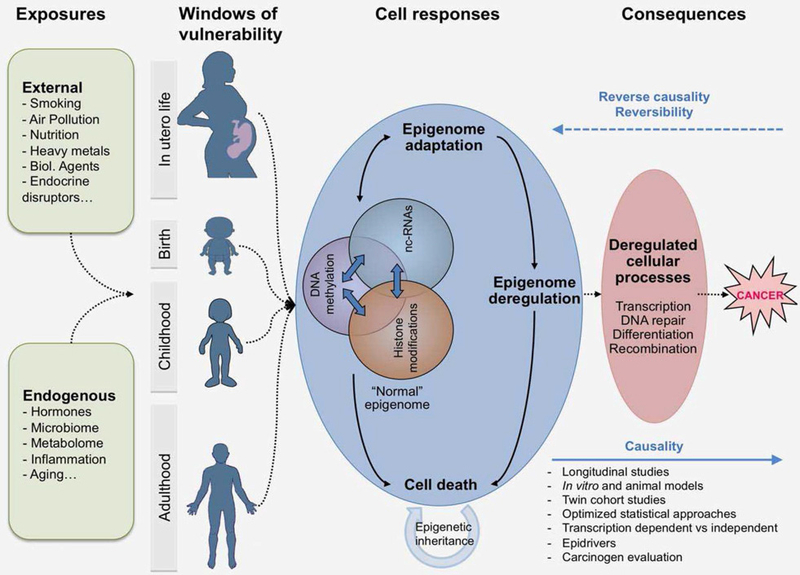Figure 1.

Exposures arising from external sources (environmental chemicals, air pollution, infectious agents, diet, tobacco, alcohol, endocrine disruptors) and internal processes (metabolism, hormones, inflammation, gut microflora, aging) may induce stable and potentially reversible changes in the epigenome. The patterns (“signatures”) and persistence of these alterations depend on multiple factors, including the type of epigenetic changes (some genomic regions remain methylated for longer periods than others), the dosage and duration of the exposure (longer and more intense exposures could minimize reversibility of DNA methylation), the tissue type and the developmental stage (in utero life or puberty may be particularly sensitive periods to some exposure). Thus, epigenetic mechanisms may represent “sensors” of exposure and “mediators” of the outcomes, including cancer development. Epigenome alterations should prove instrumental in discovery of new biomarkers for risk stratification and early detection and attractive targets for novel therapies and preventive strategies.
